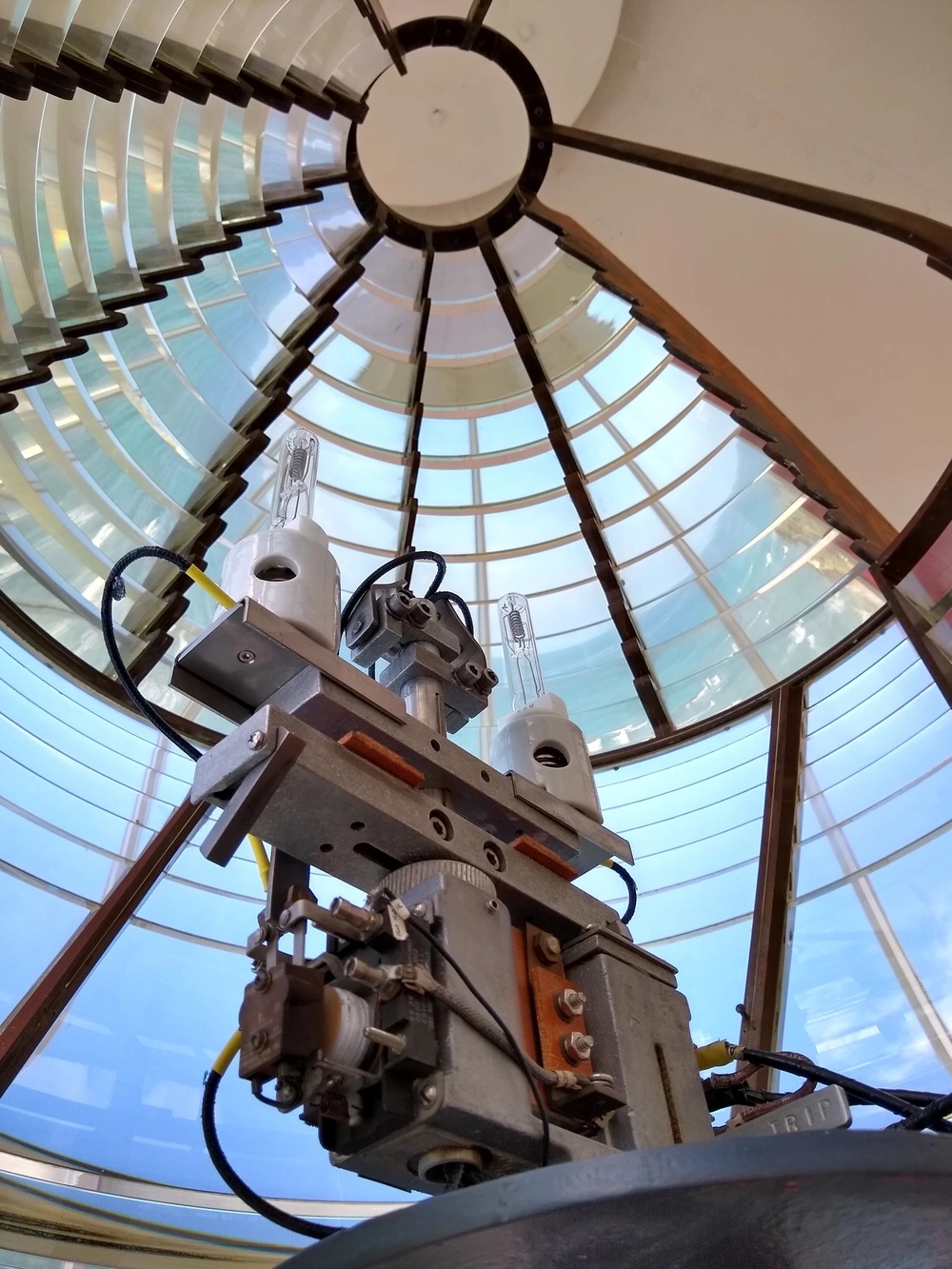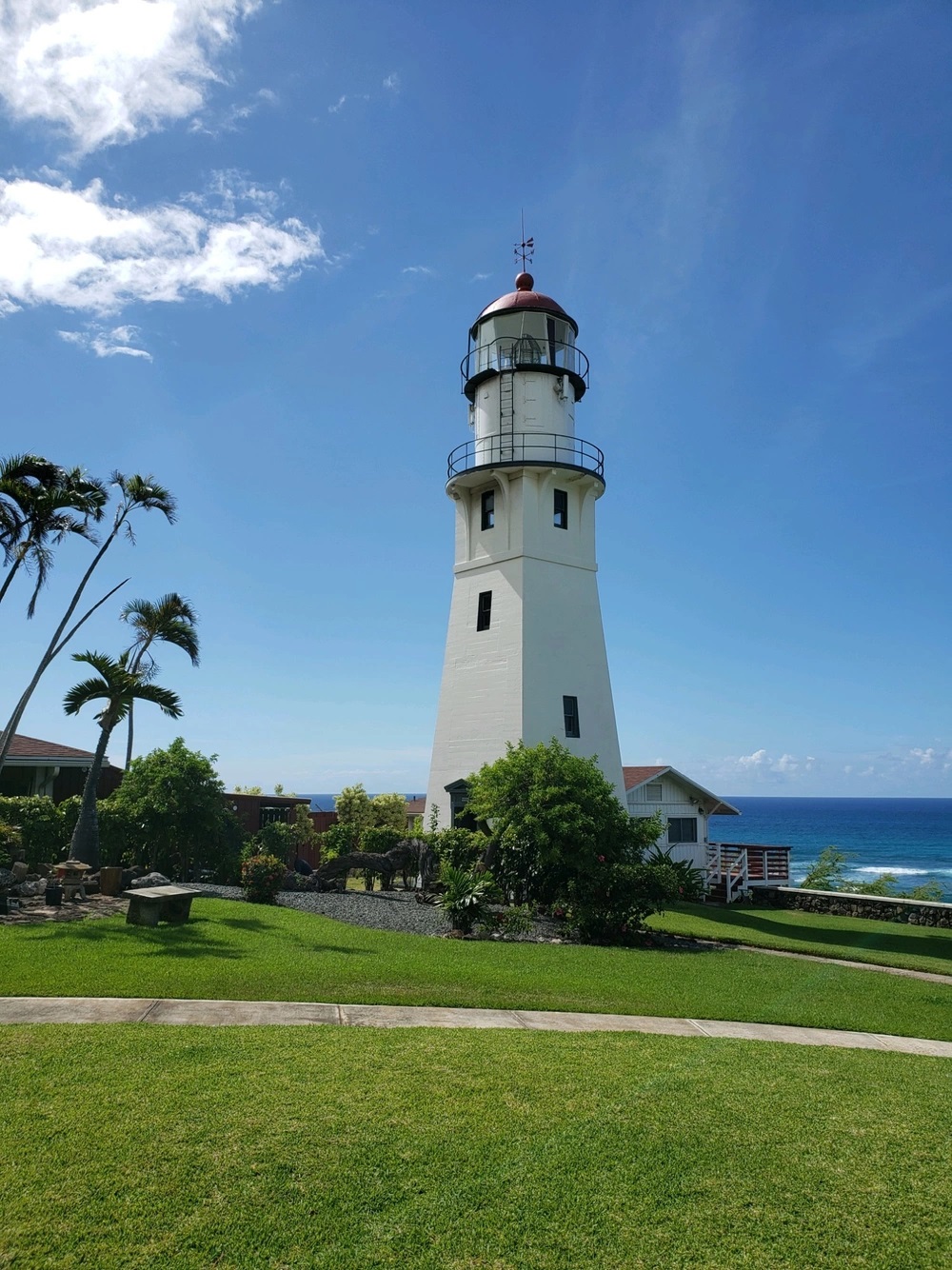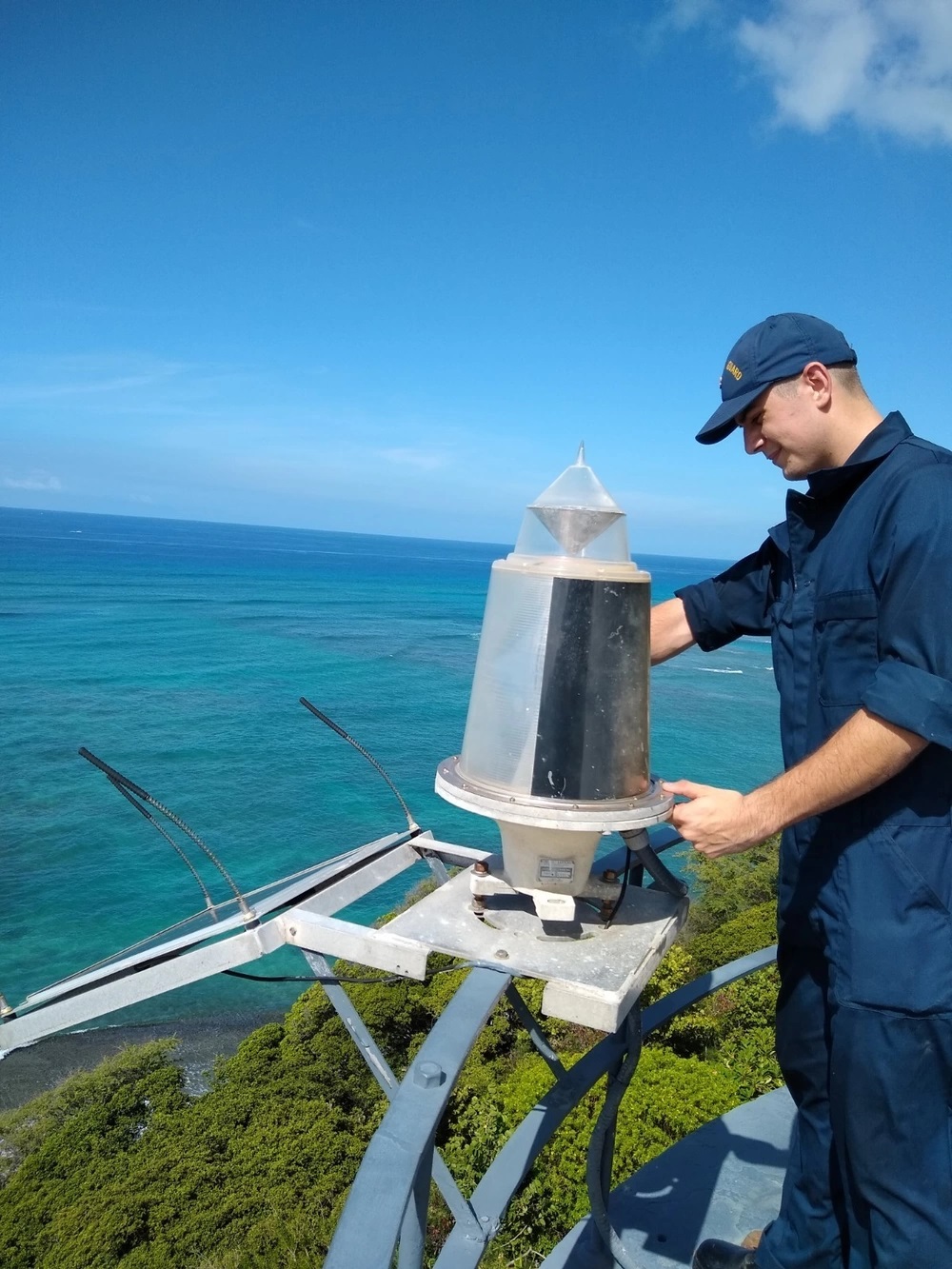EDITOR’S NOTE: This article first appeared on the Coast Guard Compass Jan. 14, 2020.

 Diamond Head Light shines from a U.S. Coast Guard facility on an extinct volcano overlooking one of the most popular beaches in the world.
Diamond Head Light shines from a U.S. Coast Guard facility on an extinct volcano overlooking one of the most popular beaches in the world.
South of Waikiki Beach, Hawaii, Diamond Head crater serves as a landmark for vessels approaching Honolulu Harbor and the lighthouse guides mariners around reefs in the area.
British sailors named the famous crater Diamond Head in the 1820s, when they mistook glinting calcite crystals for diamonds.
“Diamond Head Light overlooks a significant reef,” said Chief Petty Officer Joshua D. Williams, the officer-in-charge of Aids to Navigation Team (ANT) Honolulu, the Coast Guard unit charged with maintaining the light. “In the late 1800s, a vessel went aground on the reef off of Diamond Head, which led to the construction of the original lighthouse.”
First lit in 1878, several lighthouses have been built at the site and the current lighthouse was built in 1917. It was listed on the National Register of Historic Places in 1980 and featured on a U.S. postage stamp in 2007.
The 64-foot-tall lighthouse shines a white light that can be seen for nearly 20 miles, and to mark the dangerous shoal, a red sector light that can be seen for about 16 miles.
The area around the lighthouse is one of the top tourist attractions in the world. More than nine million tourists visited Hawaii in 2017, according to the Hawaii Tourism Authority, and Waikiki Beach was one of the top destinations on Oahu.
Honolulu is also a commercial, recreational, and military maritime hub for the 50th state and it is home to the U.S. Indo-Pacific Command and U.S. Pacific Fleet.
“Honolulu Harbor is a major shipping port and many large vessels pass offshore of the lighthouse,” said Williams, a 16-year Coast Guard veteran from Silver Lake, New Hampshire. “With Pearl Harbor close by, the re is also significant military traffic on the waters off Oahu. Many fishing vessels and recreational vessels pass by the lighthouse and Diamond Head on a daily basis.”
re is also significant military traffic on the waters off Oahu. Many fishing vessels and recreational vessels pass by the lighthouse and Diamond Head on a daily basis.”
Based on Sand Islan d, the five-member ANT maintains 161 other aids to navigation across the Hawaiian Islands.
d, the five-member ANT maintains 161 other aids to navigation across the Hawaiian Islands.
ANT Honolulu also maintains five other lighthouses, including the Makapu’u Lighthouse on Oahu, which has the largest Fresnel lens in the world.
“The aids to navigation primarily mark reefs, harbors, and significant points on each island,” said Williams.
The Hawaii Aids to Navigation are part of the Coast Guard system of more than 48,000 buoys and beacons that mark 25,000 miles of U.S. inland, intracoastal and coastal waterways. American waterways generated more than $5.4 trillion in economic activity in 2018.
Rear Adm. Kevin E. Lunday, the commander of the Fourteenth Coast Guard District in 2020, and was responsible for all Coast Guard operations around Hawaii, Guam, the Commonwealth of Northern Mariana Islands, American Samoa, and activities in Singapore and Japan. The Diamond Head Lighthouse is located next to his official residence.
"Diamond Head Light, known locally as a hale ipukukui (lighthouse), was first established as a lookout on the slopes of Diamond Head in 1878,” said Lunday. “The beacon has been steadfast in guiding mariners for more than 100 years and exemplifies the Coast Guard's commitment to the safety, security and stewardship of the waterways around Hawaii and into the Blue Pacific."